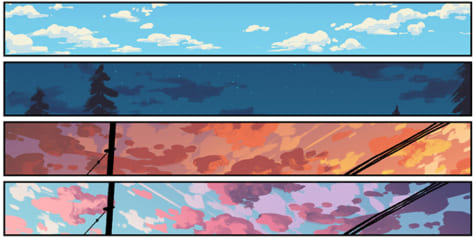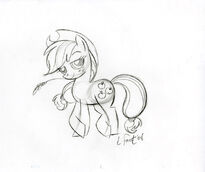I first heard the rapper Daniel Dumile (pronounced DOOM-ee-lay) when I was fourteen and hip-hop was just beginning to bloom. The music was not so much “CNN for black people,” as Chuck D would later dub it, as a lingua franca. I came up awkward in West Baltimore—a tall black boy with no jumper, no gear, and no game. But my mastery of the arcane verses of X-Clan, my sense that the decoupling of EPMD was an irreparable tragedy, and my abiding hatred of Vanilla Ice ushered me into the scowling ranks of my generation.
In those days, you could tune in to “Yo! MTV Raps” and see everything from the gangsta stylings of N.W.A. to the mysticism of Rakim and the goofy musings of the Afros. This was the heyday of sampling—most rap was too small for lawsuits—and a hard-ass beat could come from anything: the opening piano riff from Otis Redding’s “Hard to Handle,” the horns from Inspector Gadget’s theme song, a hook from “Schoolhouse Rock.”
Dumile was typical of that motley generation. Performing under the name Zevlove X, he made his début in 1989 with a verse on a song called “The Gas Face,” the second single by the group 3rd Bass. In the video, an assortment of hip-hop royalty gives “the gas face” (a maneuver that involves shaking your face in a slack-jawed manner, while moaning) to Adolf Hitler, the South African President P. W. Botha, and the mainstream rapper MC Hammer. Dumile, who was eighteen years old when the video was made, wears a gas-station attendant’s uniform and a baseball cap cocked to the side. His babyish face seems to shrink behind a pair of oversized glasses.
Two years later, as a member of the group KMD, Dumile released the album “Mr. Hood.” It was uneven, notable mostly for the cult hit “Peach Fuzz” (“By the hairs of my chinny chin chin, gots many plus plenty / String by string, I think I counts like twenty”). Dumile’s style is vibrant and freewheeling; he skates over the beat, undisturbed by guitar and piano riffs, sliding words into the empty spaces between the snare and the kick drums. “At the time, it was people coming out everywhere,” he told me recently. “It was ‘Such-and-such over there is live. Such-and-such over here is live.’ And we were all going hard. It was slightly competitive, and everyone was blowing before us. We were kind of the fringe group. It was like, ‘You know about KMD, yo?’ ”
KMD never got the chance to blow up. In 1993, Dumile’s brother Dingilizwe, also a member of KMD and known as Subroc, was hit by a car and killed. Later that year, KMD’s label, Elektra, refused to release the group’s second album, “Black Bastards,” fearing a controversy over the cover art (a Sambo figure being sent to the gallows). The group left the label, just as rap’s commercial appeal was becoming undeniable. Artists like Snoop, Tupac, and Dr. Dre were going multiplatinum, and by the end of the decade rap had gone from American cult music to American pop music.
Meanwhile, I kept the assembled works of Wu-Tang Clan on repeat and stewed, convinced that somewhere around 1998 hip-hop had run out of things to say. I was not alone. Disaffected music fans began to refer to the halcyon days of the eighties and nineties—when every rapper had a d.j., and label owners didn’t vamp in videos, confusing themselves with artists—as “the Golden Era.”
We were the kind of fundamentalists that haunt every genre of popular music. By the end of the nineties, we had started seeking a sound that offered something other than guns, girls, and drugs. Some of us found neo-soul. Others got lost in our parents’ jazz records. And still others were radicalized and turned to U2 and Björk.
Dumile vanished from the national scene and began living as a civilian in New York City. He had a child. “I was just doing regular stuff, just raising my son,” he told me.
Then, in 1999, Dumile released a solo record, “Operation: Doomsday,” under the moniker Metal Face Doom. His verbal agility was intact, and his lyrics had grown more sinister. There was a mean streak to his humor, and he made references to the death of his brother (“On Doomsday—ever since the womb, till I’m back where my brother went / That’s what my tomb will say”). And something else—Dumile, in the guise of MF Doom, did literally what most rappers only do metaphorically: he wore a mask.
A rap album is an auto biographical comic book, whose author styles himself as a twisted, oft put-upon antihero. Carlton Ridenhour, a Long Island native who studied graphic design in college, picked up a mike and became Chuck D, an enemy of the state, a revealer of racist conspiracies, a militant watched by the F.B.I. Christopher Wallace was morbidly obese and, by his own assessment, “black and ugly as ever,” but when he became Biggie Smalls he transformed himself into a Lothario whose hits, like “One More Chance,” portrayed him as a prolific cuckold artist—“Where you at flipping jobs, playing car-notes? / While I’m swimming in your women like the breaststroke.” At various moments, the rapper Nas billed himself as Nasty Nas (corner seer), Nas Escobar (gangsta drug kingpin), and Nastradamus (sanctimonious, persecuted celebrity).
When Dumile began performing as MF Doom, he extended hip-hop’s obsession with façades. While other m.c.s fashioned themselves after outlaws, thugs, or drug dealers, Dumile, whose handle is inspired by the Fantastic Four villain Dr. Doom, called himself “the Supervillain.” When he raps, he often refers to Doom in the third person. Other m.c.s are obsessed with machismo; Dumile is obsessed with “Star Trek” and “Logan’s Run.”
When I rediscovered Dumile, in his new guise, I was on the cusp of fatherhood and life-partnership, and considering divorce from the music of my youth. My outlook was that of any Golden Age proponent—I was worn down by the petty beefs between rappers, by the murders of Tupac and Biggie, and by the music’s assumption of all the trappings of the celebrity culture in which it now existed.
Doom’s music was revanche, and the Doom persona felt as though it had emerged from the graveyard of rappers murdered by glam-hop. Onstage, Doom looked the part. He cultivated a dishevelled aspect—ill-fitting white tees or throwback Patrick Ewing jerseys. His paunch gently rebelled against the borders of his shirt. He was visibly balding. His manner suggested a retired B-boy tossing off the trappings of domesticity for one last boisterous romp.
The mask “came out of necessity,” Dumile explained. It was a warm afternoon in Atlanta, where he lives now, and we were sitting in black vinyl chairs in an alley in midtown. Dumile wore a green polo shirt, matching green shorts, a pair of black Air Jordans without socks, and a New York Mets cap. His glasses were missing a lens and sat crooked on his face. He removed the Mets cap and placed it on his knee.
Dumile, who is now thirty-eight, was raised on Long Island, home of several prominent rap groups of the Golden Era—De La Soul, Public Enemy, EPMD, and Leaders of the New School. He started performing during the infancy of hip-hop, when no one had yet realized the potential for big money in a guy talking into a microphone.
“Rhyming wasn’t that popular back then, but it was fun,” Dumile told me. “And people would say, ‘Oh, you rhyme? Oh, snap, say a rhyme for me! Say another one! Say the one about the girl!’ Everybody had a cousin who came out for the summer and could rhyme. And you’d be like, ‘Oh, he rhymes? Oh, he rhymes? I gotta meet him.’
“Ever since third grade, I had a notebook and was putting together words just for fun,” Dumile went on. “I liked different etymologies, different slang that came out in different eras. Different languages. Different dialects. I liked being able to speak to somebody and throw it back and forth, and they can’t predict what you’re going to say next. But once you say it they’re always like, ‘Oh, shit!’ ”
For MF Doom, Dumile wanted to create a character with a complete backstory, which he would reference through a series of albums. “The story was coming together, and it worked and became popular. And now people wanted to see shows, and I’m like, how do I do that?
“I wanted to get onstage and orate, without people thinking about the normal things people think about. Like girls being like, ‘Oh, he’s sexy,’ or ‘I don’t want him, he’s ugly,’ and then other dudes sizing you up. A visual always brings a first impression. But if there’s going to be a first impression I might as well use it to control the story. So why not do something like throw a mask on?”
Or throw the mask on someone else—Dumile routinely sends out one of his comrades in the Doom costume and has him lip-sync the entire show. He sees this as a logical extension of the Doom idea. Fans who have paid for tickets tend to disagree. Across the Internet there are videos of imposters—“Doomposters”—being booed off the stage, with comments posted like “I waited an hour for this bullshit,” or “This shit is tenfold worse than Ashlee Simpson or Milli Vanilli.”
If Dumile had his way, he would take it further. He jokes that he’d like to dart backstage after a performance, take off the mask, and then wade into the crowd—beer in hand—and applaud his own work. In conversations with strangers, if the subject of Doom comes up, Dumile will simply play along, like Peter Parker or Bruce Wayne.
“I’m the writer, I’m the director,” Dumile said. “If I was to go out there without the mask on, they’d be like, ‘Who the fuck is this?’ ” He went on, “I might send a white dude next. Whoever plays the character plays the character . . . I’ll send a Chinese nigger. I’ll send ten Chinese niggers. I might send the Blue Man Group.”
Dumile has released seven albums since “Operation: Doomsday.” Most of them have been under the name MF Doom, but he has also used semi-related personas like Viktor Vaughn (inspired by Dr. Doom’s real name in Marvel comics) and King Geedorah (the three-headed monster in Godzilla movies). The most highly regarded of his recent albums is “Madvillainy” (2004), a collaborative effort between Dumile and the Los Angeles-based underground producer Madlib. (The duo dubbed themselves “Madvillain.”) The album’s production was minimalist, like much of Doom’s solo work. A great hip-hop producer can hear music that spans many genres and assemble it, in bits, into a coherent aesthetic—and Madlib has an ear for samples ready-made to be looped. But the album’s singular sound came mostly from Doom’s raspy baritone rendering a sort of nerdcore poetry: “Off pride, tykes, talk wide through scar-meat / Off sides, like how Worf ride with Star-Fleet.”
One Friday in April, I flew out to meet Dumile in Los Angeles, where he was working on his next project, a second collaboration with Madlib. He planned to work the first night, and offered to let me watch the session. But he was running late, and we settled on simply having dinner and starting up on Saturday.
From that point, the weekend took on the feel of juvenile fantasy. My hotel, in West Hollywood, looked like a set from “Entourage.” On Friday evening it became a night club, and in order to get back to my room I had to present my key to two people manning a velvet rope. Behind the reception desk, a woman lounged on a bed perched in an elevated alcove.
When I called Dumile the next morning, he offered to send his driver and cohort, Five (named for Johnny Five, the robot from “Short Circuit”), to pick me up at the hotel at one o’clock. By two, I hadn’t heard anything, so I picked up a book and headed downstairs.
The party had started early. There was a d.j. playing MP3s from his laptop a few yards from the pool. Women in bikinis wandered out from the deck into the lobby. Anxious young men in shorts filed in from the entrance. It was exactly what I would have wanted all my Saturdays to be like when I was sixteen. Except that almost everyone was white.
I spotted Five at a table drinking a Bloody Mary. Short and bespectacled, with a long ponytail, he waved happily as I approached. “Doom didn’t give me your number,” he explained. He did not look as though he’d been trying hard to rectify the problem.
We got into his black Chevy Avalanche and drove down Sunset, presumably to see Dumile at work. But there was much to be done before that. We stopped at Amoeba Records to pick up Doom’s new album, “Born Like This,” since Dumile had not yet heard the finished product. We had to pick up beer, too, a necessity for the transition from Dumile to Doom. We had to wait for forty-five minutes in front of the house north of downtown where Dumile was staying. When he emerged, he was carrying some audio equipment, and was accompanied by a woman clutching a large bottle of Grey Goose vodka. Dumile packed the equipment in the trunk. The woman handed him the bottle, and he hopped in the back. He picked up the new record and groused about the cover art.
“Five, ride around,” he said. “I want to hear how it sounds.”
A great m.c. is, on one level, a drummer performing a solo. But, more than that, he is a poet, assembling words according to the rules of a particular meter. Dumile offers a darkly humorous take on the life of the Doom character. There is no single narrative, as much as there are variations on a theme, the most constant being his mask. From the song “Beef Rap” off of his album “MM . . . Food”: “He wears a mask just to cover the raw flesh / A rather ugly brother with flows that’s gorgeous.”
Hip-hop feeds on the aggression of post-pubescent males. And Dumile draws on the aggression of a particular type of male who came of age in a particular era. When he claims to “eat rappers like part of a complete breakfast,” when he challenges other m.c.s to battle for Atari cartridges, when he yells “Zoinks!” mid-rhyme, he’s signalling those who grew up with Saturday-morning cartoons and “The Dukes of Hazzard.” For his listeners, his references—“Good Times,” popping wheelies, karate classes—evoke lost innocence, even when the topic is grim. On “Hey!,” Doom delivers a couplet about some old neighborhood friends, now incarcerated, over a sample from the theme song to “Scooby-Doo”:
To all my brothers who is doing unsettling bids
You could have got away if it was not for them meddling kids.
“When I do it, I feel like I’m thirteen again,” Dumile told me. “I remember, when we were that age, everybody was nice, and everybody was getting nicer. That same well of energy we were drawing from then, I go to there. . . . To me it feels like that time was richer, every second was really five minutes. Being older now, grown, I’m like, what do we really do that’s fun? I’m kind of corny when you think about it. What could I rhyme about? Let me see, um, I gotta pay the rent today.”
The rest of our day bore this out. We spent the hours in the manner of teenagers with nowhere to be, and I saw that Dumile’s music sends me back to adolescence because he lives—at least while he’s creating—as though he were back there, too.
We wound through the hills of Los Angeles with “Born Like This” blasting at full volume. Hip-hop is music for warriors—or, at least, for those who imagine themselves as such. I’d listened to “Born Like This” on my iPod during the flight out and come away unmoved. But hearing a song like “Cellz”—with its lengthy jacking of a poem by Charles Bukowski, pounding drums, and high slicing whistles—at high volume changed my mind.
Dumile had said he’d be working by noon; it was now four o’clock. We came off a sharp curve, and he pointed out a large house on a cliff, which the producer Danger Mouse had recently bought. We stopped at a broad opening, high up. You could see the neighborhoods of Mount Washington and Cypress Park, a commuter-train line, the skyscrapers of downtown Los Angeles. With the music still pumping, he walked around for a bit, nodding and making small talk with Five.
Then they hopped back in the car, and Five drove to the studio, a cottage behind a friend’s house. Dumile opened the trunk and pulled out a heavy bag filled with rhyme books, which he’d FedExed out the night before, and passed it to me. “If I’m gonna let you see my rhyme books, you could at least carry the bag,” he said.
Dumile took some audio equipment inside. Then he reiterated instructions that he’d given me the night before: there was to be no talking while he was working, not from me, from Five, or from him. He fiddled with a two-hundred-and-fifty-gig hard drive until Madlib’s instrumentals pounded out from the speakers, filling the room.
He paused to explain his approach. “When I’m doing a Doom record, I’m arranging it, I’m finding the voices. . . . All I have to do is listen to it and think, Oh shit, that will be funny. I write down whatever would be funny, and get as many ‘whatever would’ funnies in a row and find a way to make them all fit. There’s a certain science to it. In a relatively small period of time, you want it to be, That’s funny, that’s funny, that’s funny, that’s funny. I liken it to comedy standup.”
So do his fans. Online threads about Dumile’s work tend to feature nothing but a series of favorite lines: “Oh my aching hands, from raking in grands / And breaking in mike stands,” or “What? These old things? About to throw ’em away / With the gold rings that make ’em don’t fit like O.J.”
I opened the bag and began paging through the rhyme books. It was a great honor—an m.c. sharing his rhyme books is like a magician sharing notes for his tricks. I half expected a column of light to bloom from the pages. But Dumile’s books were like his songs—scatterbrained and disorganized, a series of potentially humorous couplets. The best ones were written over in black ink two or three times. Few were arranged into verses.
Despite his edict of silence, he spent most of the evening trading jokes with Five, yelling nonsensical phrases (“Flurk! Flurk! Flurk!”) into my tape recorder, making bets centered on Five’s bad Spanish, and drinking beer. By 11 P.M., it was apparent that very little would get done. We walked out around midnight. “Give it a day,” he said, “and see how things sound in the morning.”
When I was twelve, I took a short walk from my parents’ West Baltimore row house to Mondawmin Mall. I rode the escalator up, walked into the music store, flipped through the bound platters, and with my own money purchased my first record, Stetsasonic’s “Talkin All That Jazz.”
That was 1988. R. & B. had devolved into synth-pop, and seemingly every respectable radio station was advertising itself with the tagline “No Rap.” Stetsasonic’s “All That Jazz” was a new generation’s effort to reach back and pull black music out of the mire of disco:
Tell the truth James Brown was old
Until Eric and Ra came with I Got Soul.
I played that record for most of the year. When no one was looking, I’d place my fingertips on the wax and scratch, trying to make the record tweet like a bird. That was how I inaugurated the Golden Era—in my small bedroom, doing my best rendition of Jazzy Jeff.
One afternoon last May, I met Stetsasonic’s d.j., Prince Paul, in front of the VH1 building in SoHo. Paul is best known for producing De La Soul’s first three albums, all of them classics of the Golden Era. He also produced the track “The Gas Face.” New York had just started to warm up. At all the cafés, people were seated at outdoor tables, laughing. But Paul was dressed as though he distrusted the recent change in the weather—pants and a short-sleeved brown shirt over white long johns. He had a baseball cap pulled low over his face.
I had talked to him once on the phone, but still I was off balance. He was all of five-nine, yet it was hard not to see him as monumental, as a part of my history. We walked uptown, stopped at a diner, ordered turkey burgers, and talked about his days with Stetsasonic and De La Soul and what had changed.
“Now every m.c. wants a beat tape, like ‘Yo! Gimme a beat,’ ” he said, noting that m.c.s have become more like singer-songwriters, with the egos to match. “But back then it was like ‘3rd Bass? Hmm . . . This and this! These are two songs I hear y’all on.’ ’’ Paul recalled working with Dumile for the first time. “He came in rhyme-ready when it was time to record. I met him and his brother Subroc. They were just really nice dudes. . . . I remember shortly after hearing about his brother passing, and then hearing about him going through a struggle with Elektra and that record getting dropped. And then after that I didn’t hear from him.”
Paul reconnected with Doom after hearing a single off “Operation: Doomsday,” and the two have worked together intermittently for the past ten years. Dumile appeared on Paul’s “Politics of the Business.” Paul did some comic voice-overs for “Born Like This.”
Their creative bond extends from a similar outlook toward the past, a sense that rap isn’t what it was. “If you go to a rapper today and say, ‘Yo, I got better rhymes than you,’ he’ll go, ‘Yeah, you probably do, but I sold more records,’ ” Paul said. “The pride isn’t in the lyrical content.”
Two years ago, the rapper 50 Cent challenged Kanye West, not by claiming to be a more creative artist or having superior mike skills but by daring him to sell more records. (50 Cent lost.) The ethos consecrated by Sean (Diddy) Combs—that what sells is what’s classic—has essentially carried the day. For the fan who is no longer obsessed with the pose of rebellion, with fending off other young men, or with sexual frustration, beholding hip-hop in the aughts is like stumbling across an old journal and then seeing its most inflammatory and narcissistic elements turned into a marketing plan. All the moments of tenderness (De La Soul’s “Eye Know”), idleness (the Roots’ “Lazy Afternoon”), and black comedy (Ice Cube’s “It Was a Good Day”) have been drained away.
On my last day in L.A., I followed Five from my hotel to Dumile’s studio. Today, Five explained, the ground rules were to be strictly followed. There was to be absolutely no talking and no joking. When I arrived, Dumile was sitting behind his computer cycling through the Madlib beats and taking notes. He was replaying video news reports about the chimp who had attacked a woman in Connecticut that February. The beat on loop was the same one he’d played the night before—jangling piano and a man muttering.
He clicked a button, and the news reports played over the beat. I struggled to find some connection between the two but said nothing. Dumile explained that he was working on retelling the story from the chimp’s perspective.
“I’m digging through these to get pictures for the actual facts of the piece,” he said. “It’s still the fact of shooting a monkey. What is this disrespect for life?”
He took his pad and walked outside, sat at picnic table, and started to write. I drove off to make a Starbucks run for the group. I plugged in my iPod and cranked up the Yeah Yeah Yeahs.
Dumile’s success, by hip-hop standards, has been modest. He has no platinum or gold records, or anything that could be called a hit. He is uninterested in hooks, displays a flagrant disregard for linear storytelling, and insists on cutting songs that time out before the three-minute mark. “The Gas Face” made him a local celebrity in 1989. He says that he got into a fight with some jealous rivals just before he was scheduled to perform the track on “The Arsenio Hall Show,” and he had to do the show with his arm in a cast. “Fame never helped the situation,” he told me. “Fame, in the streets, is something you don’t want.” As a member of KMD, alongside his brother, Dumile seemed to enjoy the spotlight, but he has never reconciled himself to performing as a solo act—hence his use of Doomposters. He’d rather be alone in a studio writing about a pet chimp gone berserk.
When I returned, Dumile had finished writing and come back inside to record. He had asked that I not watch him do this, but I could hear him reciting muffled lyrics. When the music paused, he peeked out and Five handed him a Frappuccino. I could see his mask hanging from a mike stand. He nodded and closed the door, and that was the last I saw of the villain. ♦






